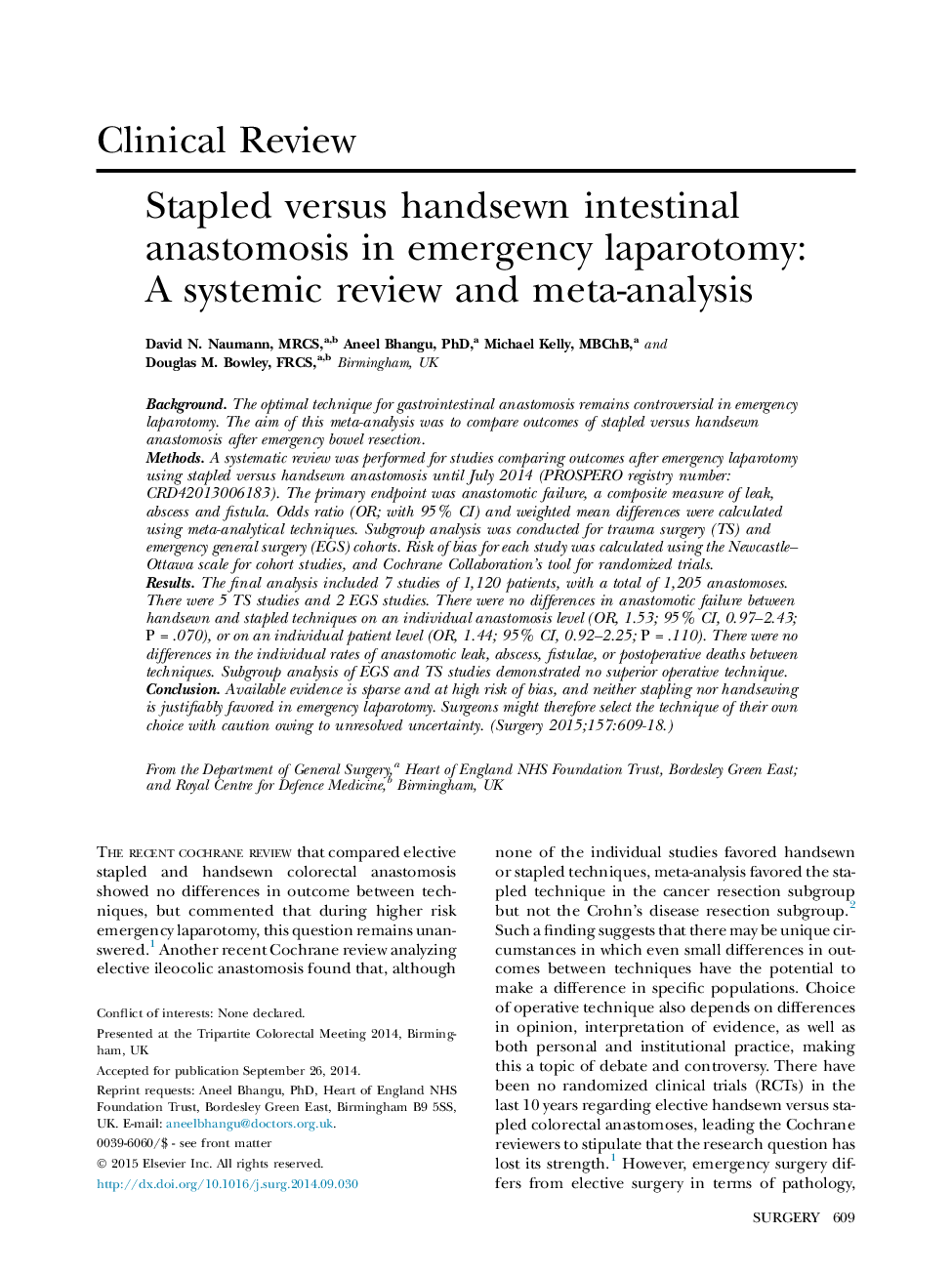| Article ID | Journal | Published Year | Pages | File Type |
|---|---|---|---|---|
| 4307166 | Surgery | 2015 | 10 Pages |
BackgroundThe optimal technique for gastrointestinal anastomosis remains controversial in emergency laparotomy. The aim of this meta-analysis was to compare outcomes of stapled versus handsewn anastomosis after emergency bowel resection.MethodsA systematic review was performed for studies comparing outcomes after emergency laparotomy using stapled versus handsewn anastomosis until July 2014 (PROSPERO registry number: CRD42013006183). The primary endpoint was anastomotic failure, a composite measure of leak, abscess and fistula. Odds ratio (OR; with 95% CI) and weighted mean differences were calculated using meta-analytical techniques. Subgroup analysis was conducted for trauma surgery (TS) and emergency general surgery (EGS) cohorts. Risk of bias for each study was calculated using the Newcastle–Ottawa scale for cohort studies, and Cochrane Collaboration's tool for randomized trials.ResultsThe final analysis included 7 studies of 1,120 patients, with a total of 1,205 anastomoses. There were 5 TS studies and 2 EGS studies. There were no differences in anastomotic failure between handsewn and stapled techniques on an individual anastomosis level (OR, 1.53; 95% CI, 0.97–2.43; P = .070), or on an individual patient level (OR, 1.44; 95% CI, 0.92–2.25; P = .110). There were no differences in the individual rates of anastomotic leak, abscess, fistulae, or postoperative deaths between techniques. Subgroup analysis of EGS and TS studies demonstrated no superior operative technique.ConclusionAvailable evidence is sparse and at high risk of bias, and neither stapling nor handsewing is justifiably favored in emergency laparotomy. Surgeons might therefore select the technique of their own choice with caution owing to unresolved uncertainty.
